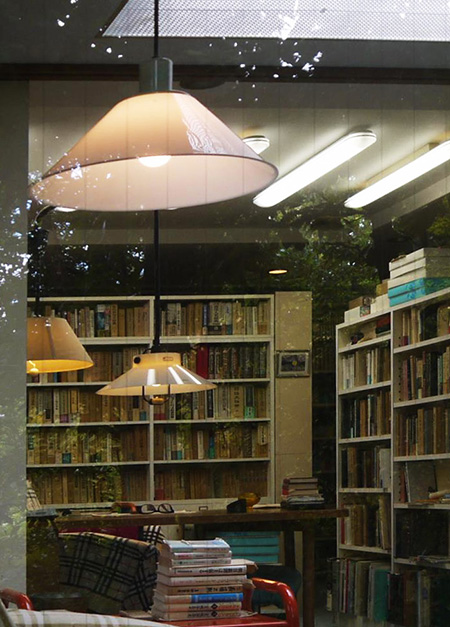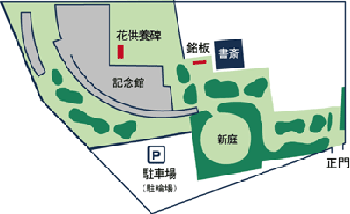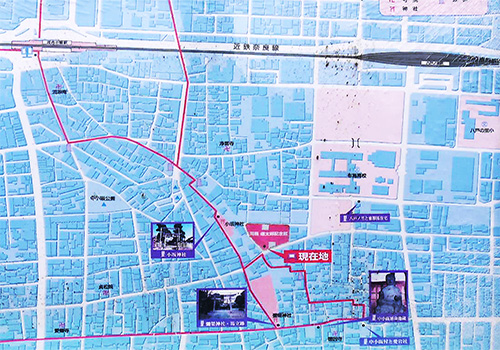

さてきのうは前段のわたしの読書体験で紙数が尽きてしまって失礼。
たぶんどなたも読書体験でいろいろな作家との「対話経験」があると思います。
そう、あれは一種の対話なのだと思います。
人類は言語を持ち始めたときから親から子へ、子から親へ
「寝物語」を語り合いながら眠りについたのだろうと思います。
生活体験を伝え、そのなかから教訓になるようなことも、
あるいは娯楽になるようなこともさまざまに語り合ってきた。
日本最初の大衆芸術と思える「琵琶法師」による平家物語などでは
神社仏閣の催事など数知れない口語伝承機会で琵琶法師は語り、
たぶん口語に適した語り口・語調で染みわたらせたに違いない。
村落共同体の成員たちはそれを楽しみにして夕べのいっときを過ごした。
そこでは受け手と語り手の「呼吸」レベルでの同期があった。
いわば問わず語りの対話的息づかいがそこにはあったのでしょう。
「祇園精舎の鐘の音、沙羅双樹の花の色・・・」と語り出す
場の空気感は一度体感したいと深く思える一節。
なんども聞いている大人たちはこころのなかで拍手喝采し、
そういう様子がはじめて聞く子たちには貴重な文化の時間であっただろう。
時代が積層していって、日本語という書き言葉が成立して、
こういうメディアは江戸期以降、顕著に書物という形式を取るようになった。
しかしたぶん、琵琶法師の弾き語りが染みわたらせた基層民族体験から
日本人には歴史文学というのが親しみやすいのかも知れない。
中国でも三国志演義がひとびとの基底的な心情旋律なのと同じように
日本人はそういう感受性の揺りかごでこの文化圏を認識していく。
司馬遼太郎さんが多くの日本人を魅了し「国民作家」と言われたのは
こういった正調の語り口のDNAがそこに感じられるからではないか。
そんな気がしてならない。
きのうは大江健三郎さんをディスったように感じられたかも知れない。
実はわたしはその後、深く埴谷雄高に傾倒していった。
戦前の共産党活動家で、なお台湾居住経験もあり、
きわめて「寡作」で有名な作家で「死霊」全3巻しか知られていなかった。
高校生のときにこの死霊を読んで、ドストエフスキー「悪霊」との対比、
そういうバランス感覚が自分の中でもコアになっていって、
いつしか大江健三郎への興味を失ったというのが真実に近い。
埴谷雄高を読みながら、しかし司馬遼太郎も読み続けていた。
心理の平衡を保ち続けるには司馬遼太郎がふさわしかったのでしょう。


上の写真は記念館で窓越しに見ることができる作家の書斎。
記念館本体は安藤忠雄という感性のフィルターを通した空間なので
それはまた別の世界観になると思います。
書斎は庭に面した寛ぎの安楽椅子空間と奥まった書棚空間に分かれる。
訪問者は、安楽椅子にたたずむ作家を想像して
対話するような心的時間を持つことが「仕掛けられて」いる。
まことにありがたい、と思われた次第。
ガラス窓越しだけれど庭先に立って司馬さんの視線を想像できた。
なんか驚くほどに自然に感じられた時間だった。
思索や読書に疲れたとき、作家はこの窓越しの植栽を愛でていた。
場所は東大阪の住宅街であり、近鉄奈良線「八戸ノ里」駅にほど近い。
作家は自然のままのたたずまいを愛したといわれる。
書斎の前の土管にもナノハナやツユクサを植えていたのだという。
かれは満州に学徒出陣し、終戦時には戦車隊少尉として栃木県佐野にいた。
その佐野時代に駐屯していた国民学校校庭のスズカケの木を愛していた。
当時を記憶する佐野の方々がこの記念館にその木のタネと苗を
送ったのだという。なにか日本の自然の母性を感じさせる逸話か。
English version⬇
[History writer’s study / Japanese good house ㉟-2]
Excuse me for running out of paper in my reading experience in the previous section.
Perhaps everyone has a “dialogue experience” with various writers in the reading experience.
Yes, I think it’s a kind of dialogue.
From the time human beings began to have a language, from parent to child, from child to parent
I think I fell asleep while talking about the “sleep story”.
It is also possible to convey life experiences and learn from them.
Or we have talked about various things that will be entertainment.
In the Heike story by “Biwa Hoshi”, which seems to be Japan’s first popular art
Biwa Hoshi talks at countless colloquial traditions such as shrines and temples.
Perhaps it must have been infiltrated with a spoken language and tone suitable for colloquialism.
The members of the village community were looking forward to it and spent the evening.
There was synchronization at the “breathing” level between the recipient and the narrator.
So to speak, there must have been an interactive breath of narrative.
“The sound of the bells of Jetavana, the color of the flowers of the sal tree …”
A passage that makes you want to experience the atmosphere of the place once.
Adults listening many times applauded in their hearts,
It would have been a valuable cultural time for the children who heard such a situation for the first time.
As the times overlapped, the written word Japanese was established,
Since the Edo period, such media have become remarkably in the form of books.
But perhaps from the base-ethnic experience that Biwa Hoshi’s narration permeated.
Historical literature may be familiar to Japanese people.
Just as the Romance of the Three Kingdoms is the basic emotional melody of people in China.
The Japanese recognize this cultural area with such a sensitive cradle.
Ryotaro Shiba fascinated many Japanese people and was called a “national writer”.
Isn’t it because you can feel the DNA of such a positive narrative there?
I don’t feel like that.
It may have felt like I had dissed Kenzaburo Oe yesterday.
In fact, after that, I was deeply devoted to Yutaka Haniya.
He was a pre-war Communist Party activist and still lived in Taiwan.
He was a writer who was extremely famous for his “poor work”, and only three volumes of “Death Spirit” were known.
He read this ghost when he was a high school student and contrasted it with Dostoevsky’s “evil spirit”.
That kind of balance is the core of me,
It is close to the truth that he lost interest in Kenzaburo Oe.
While reading Yutaka Haniya, but Ryotaro Shiba continued to read.
Ryotaro Shiba would have been suitable for maintaining psychological balance.
The photo above is the writer’s study that can be seen through the window at the memorial hall.
The main body of the memorial hall is a space that has been filtered by Tadao Ando.
I think it will be another view of the world.
The study is divided into a relaxing comfort chair space facing the garden and a deep bookshelf space.
Visitors imagine a writer sitting in an armchair
It is “triggered” to have a mental time to interact.
As soon as I was really grateful.
Although it was through the glass window, I could imagine Mr. Shiba’s line of sight while standing in the garden.
It was a surprisingly natural time.
When tired of thinking and reading, the writer loved planting through this window.
The location is a residential area in Higashi Osaka, close to Yaenosato Station on the Kintetsu Nara Line.
The writer is said to have loved the pristine appearance.
He also planted rape and Commelina communis in the clay pipe in front of the study.
He was a student soldier in Manchuria and was in Sano, Tochigi Prefecture as a tank lieutenant at the end of the war.
He loved the Suzukake tree in the national school playground where he was stationed during the Sano era.
The people of Sano who remember those days put the seeds and seedlings of the tree in this memorial hall.
It is said that it was sent. Is it an anecdote that makes you feel the motherhood of Japan’s nature?
Posted on 6月 27th, 2021 by 三木 奎吾
Filed under: 住宅マーケティング, 日本社会・文化研究







コメントを投稿
「※誹謗中傷や、悪意のある書き込み、営利目的などのコメントを防ぐために、投稿された全てのコメントは一時的に保留されますのでご了承ください。」
You must be logged in to post a comment.